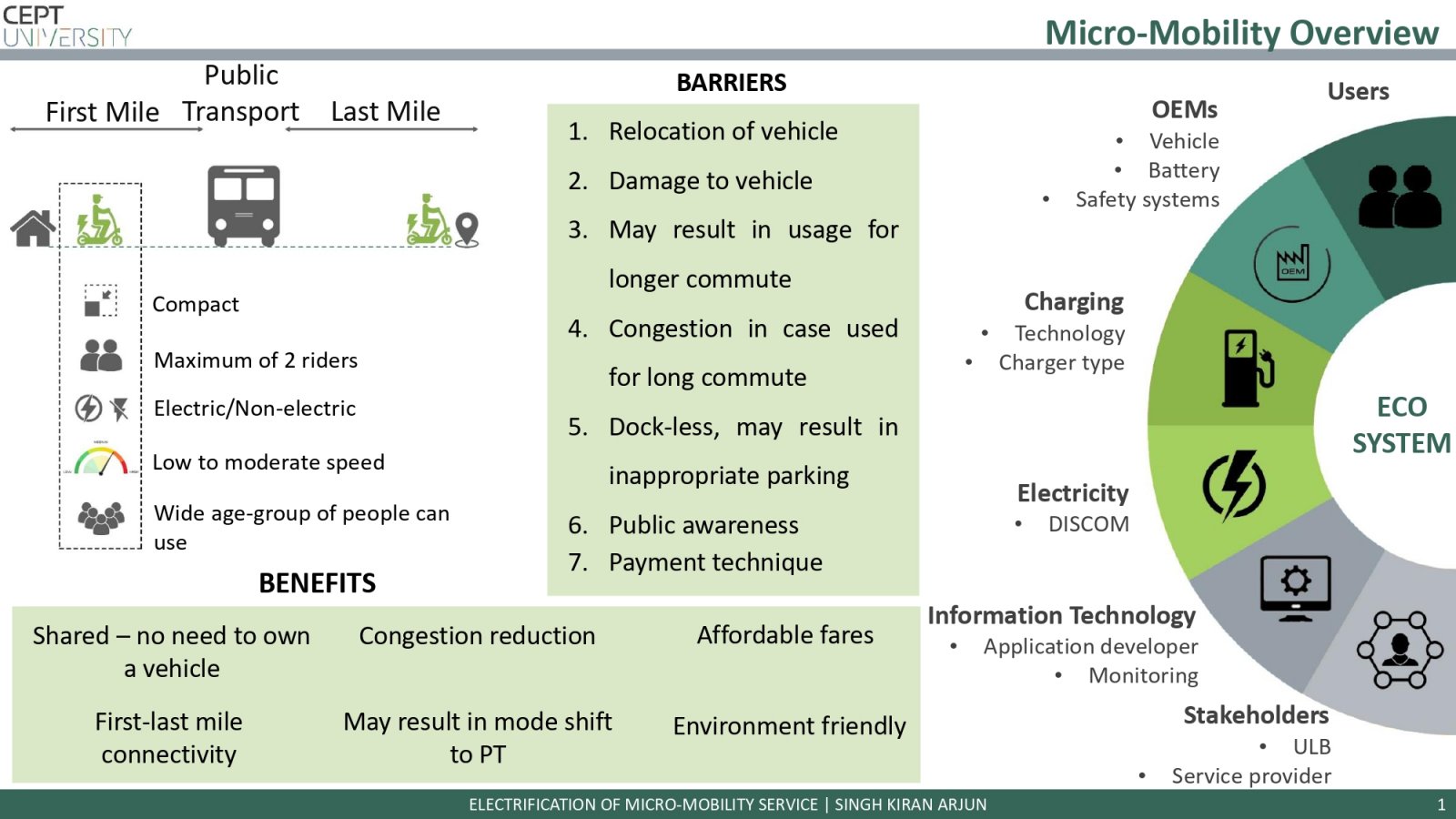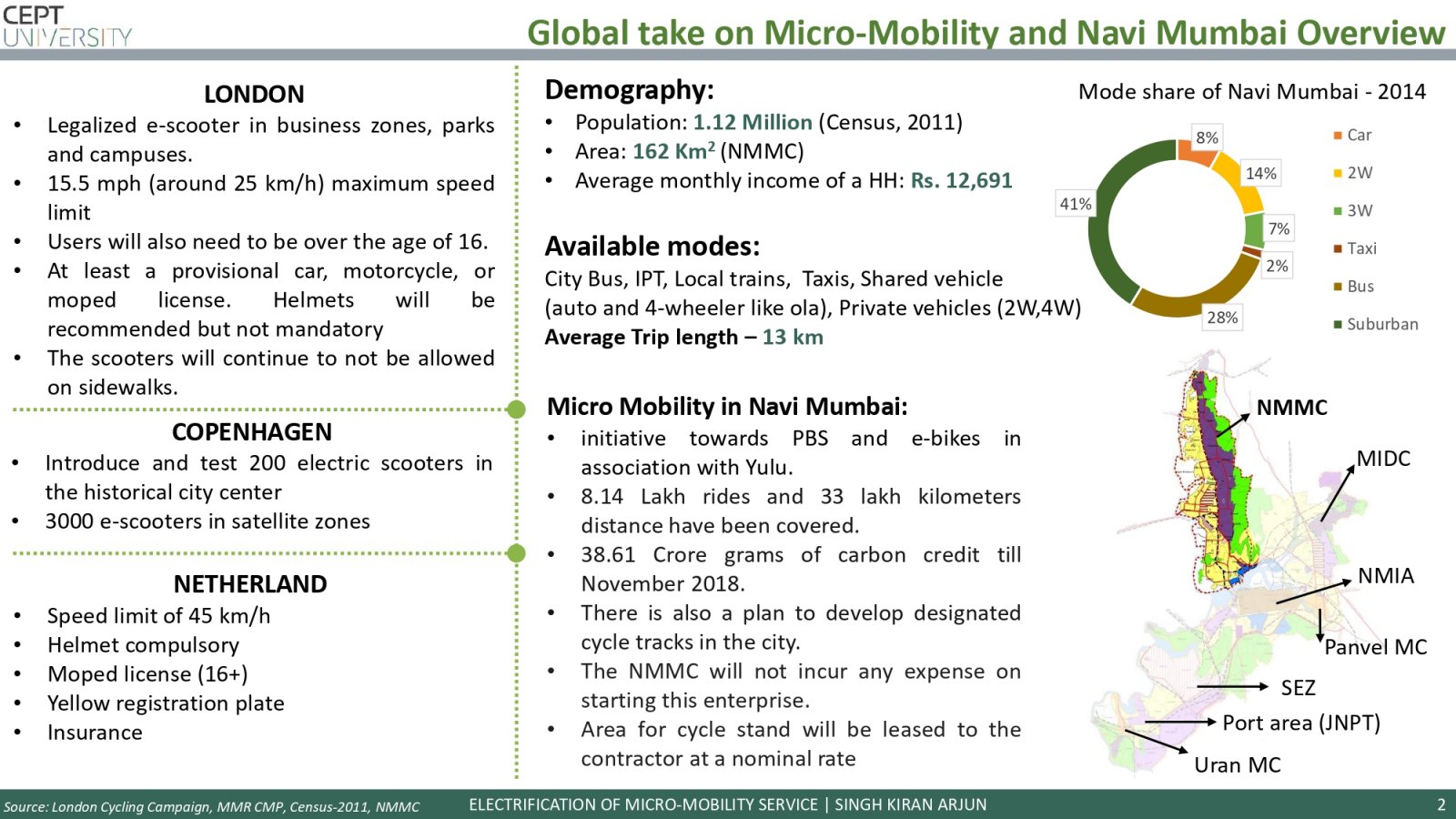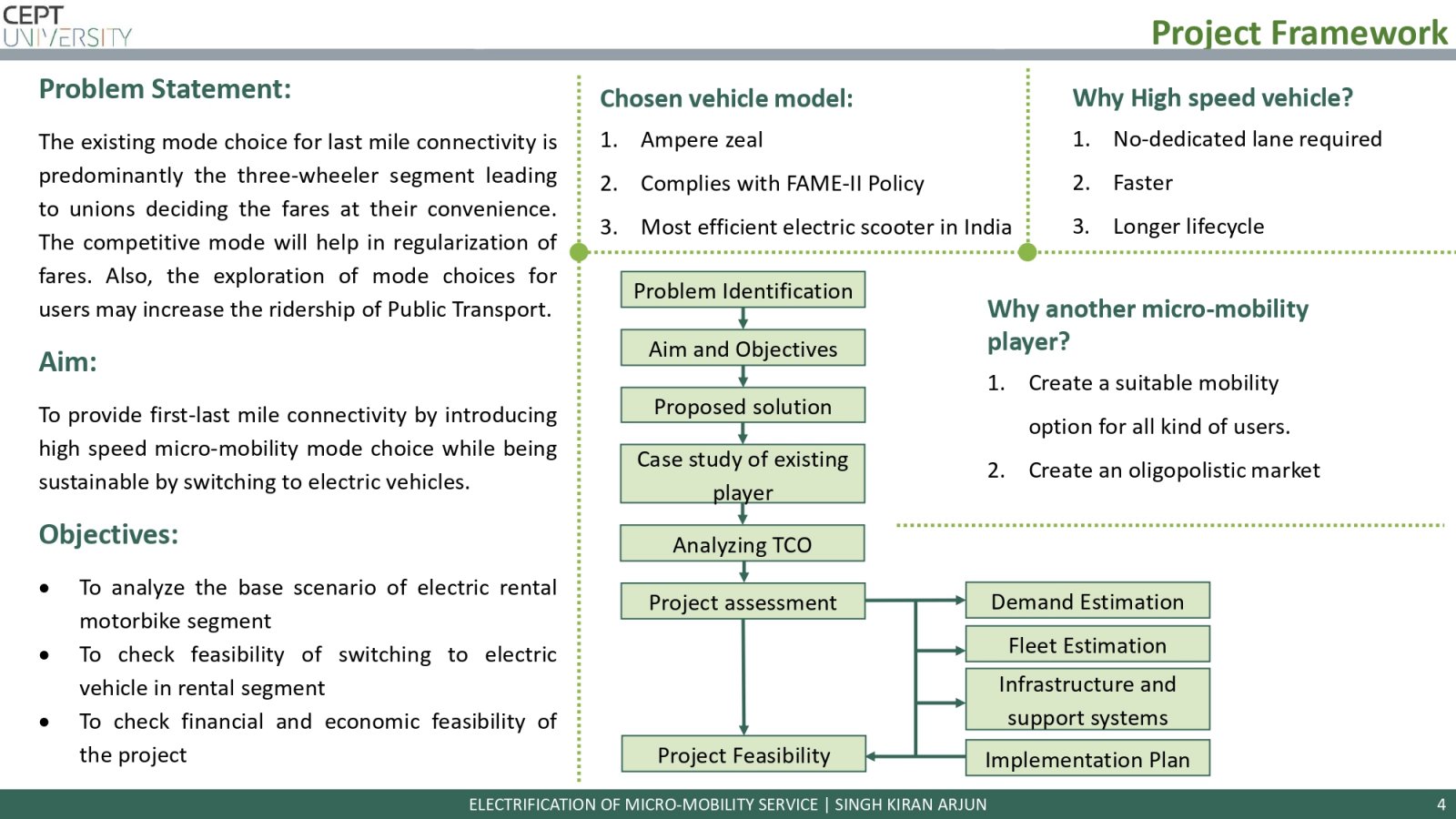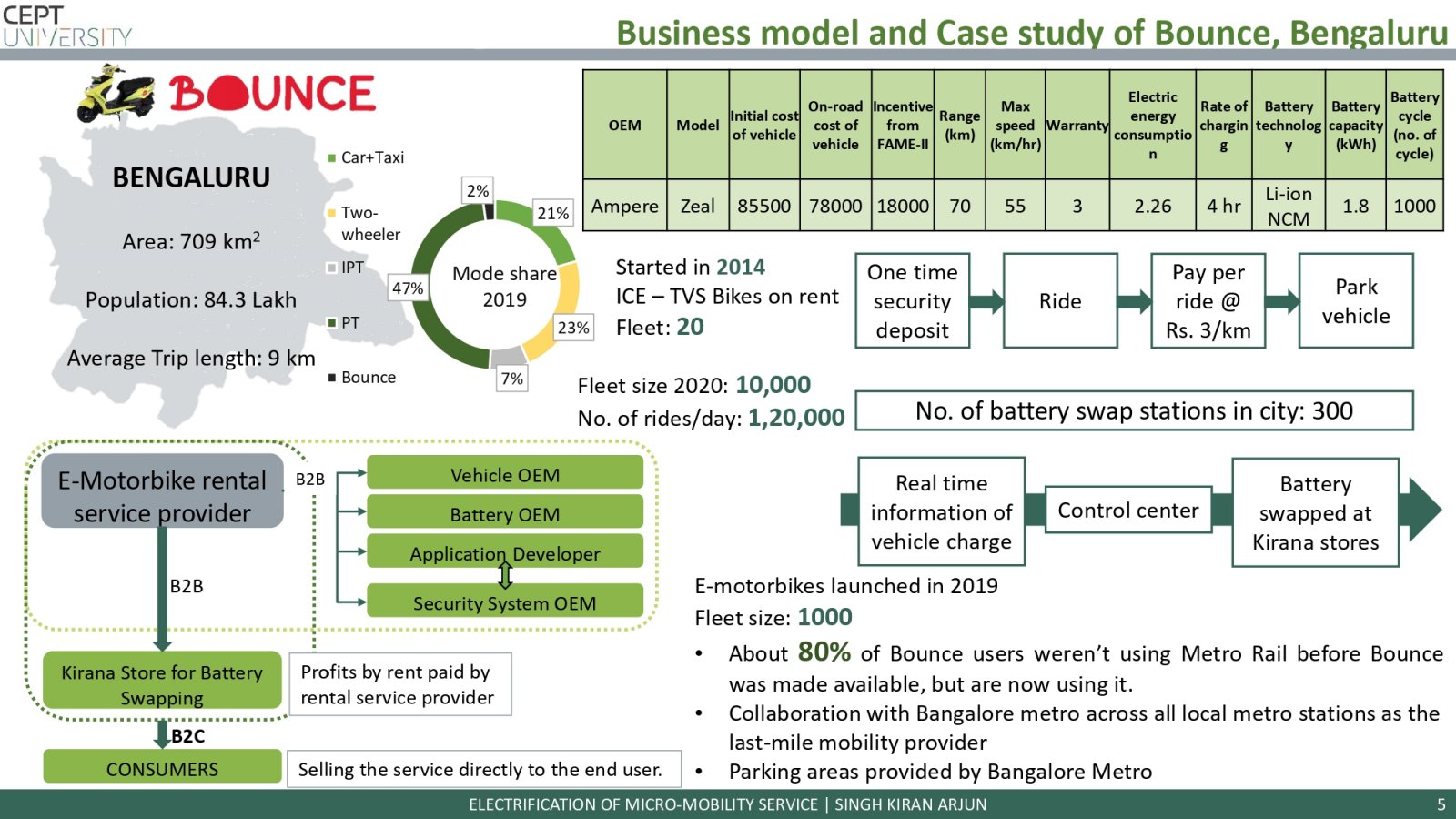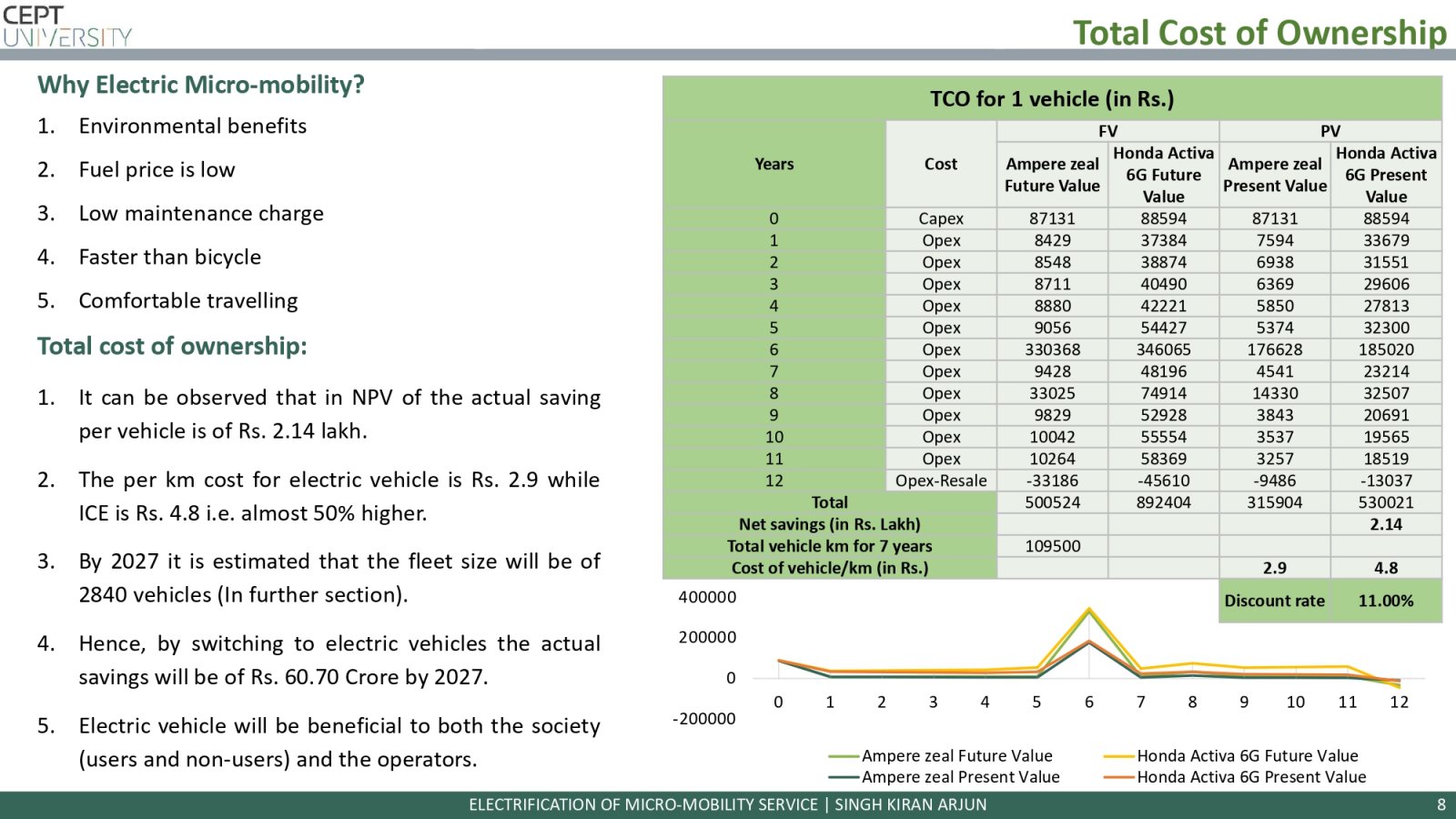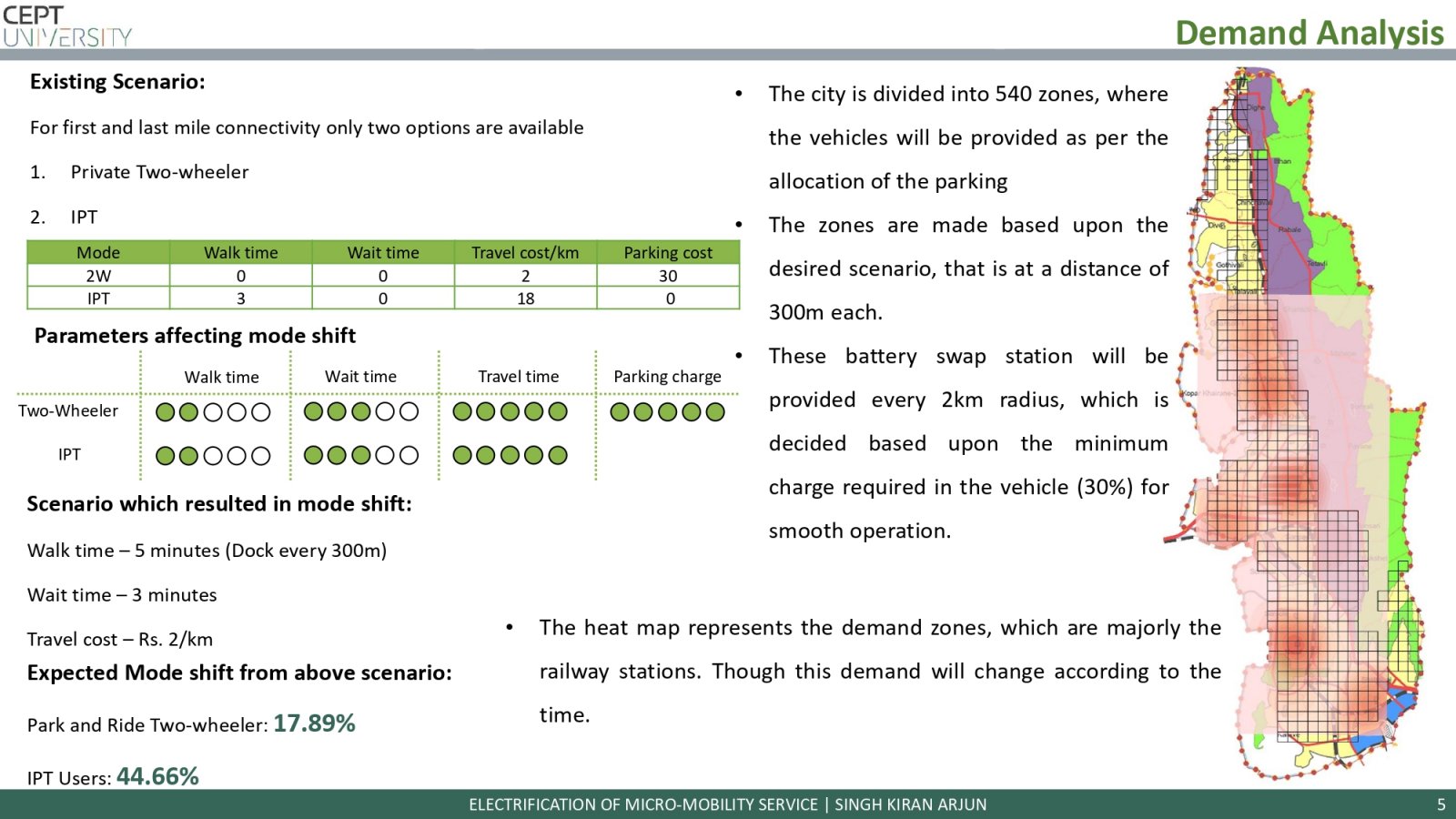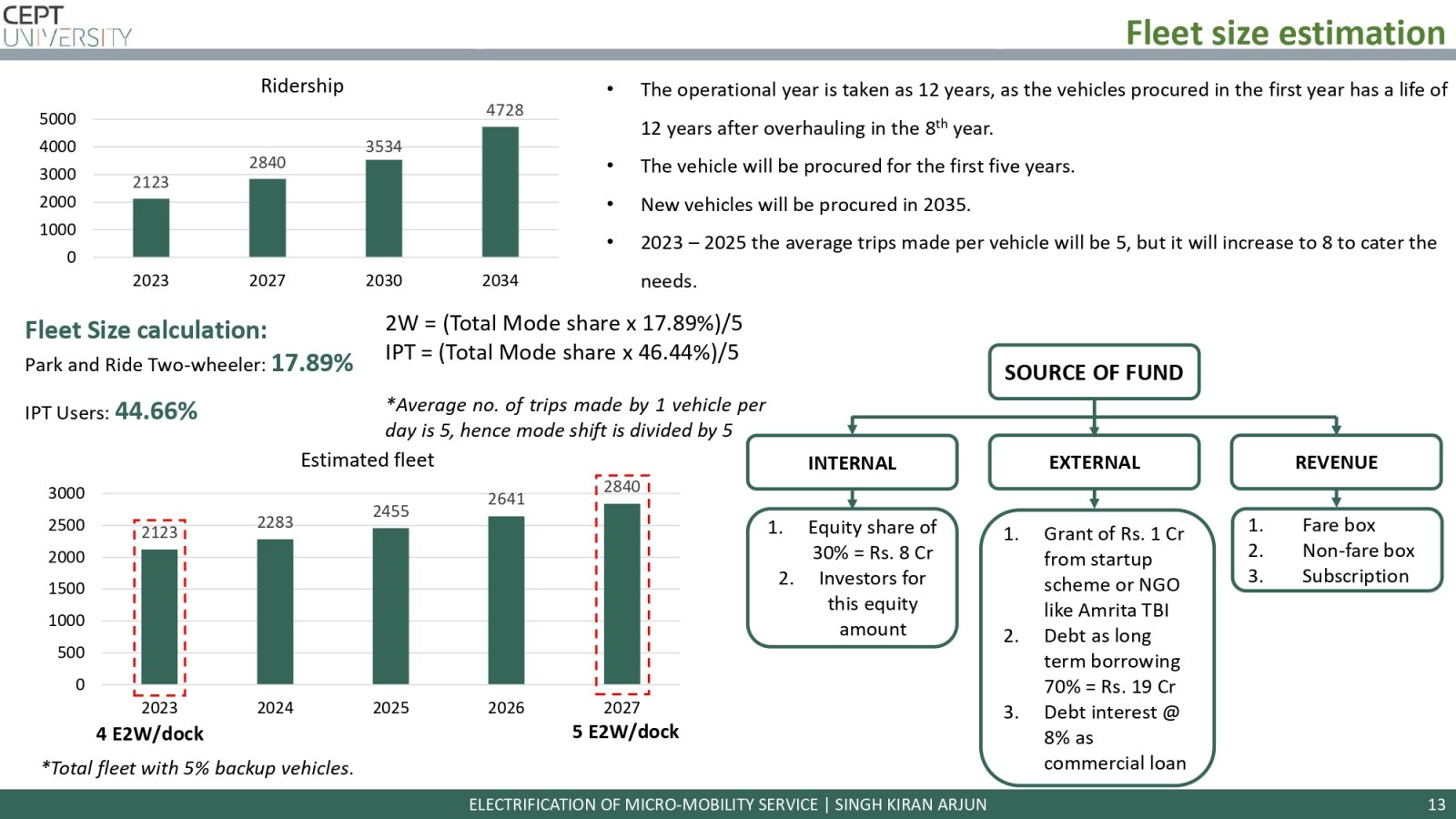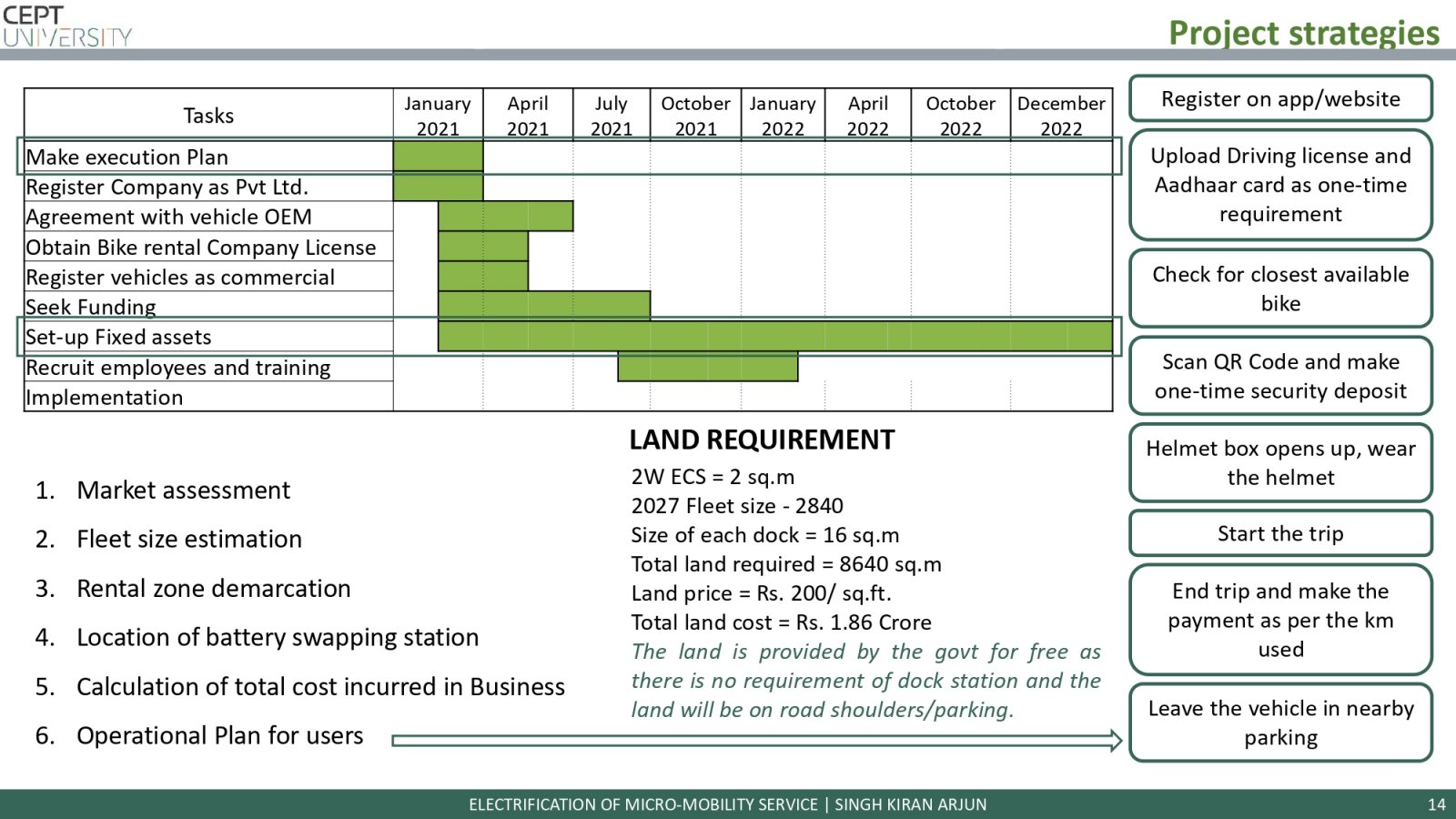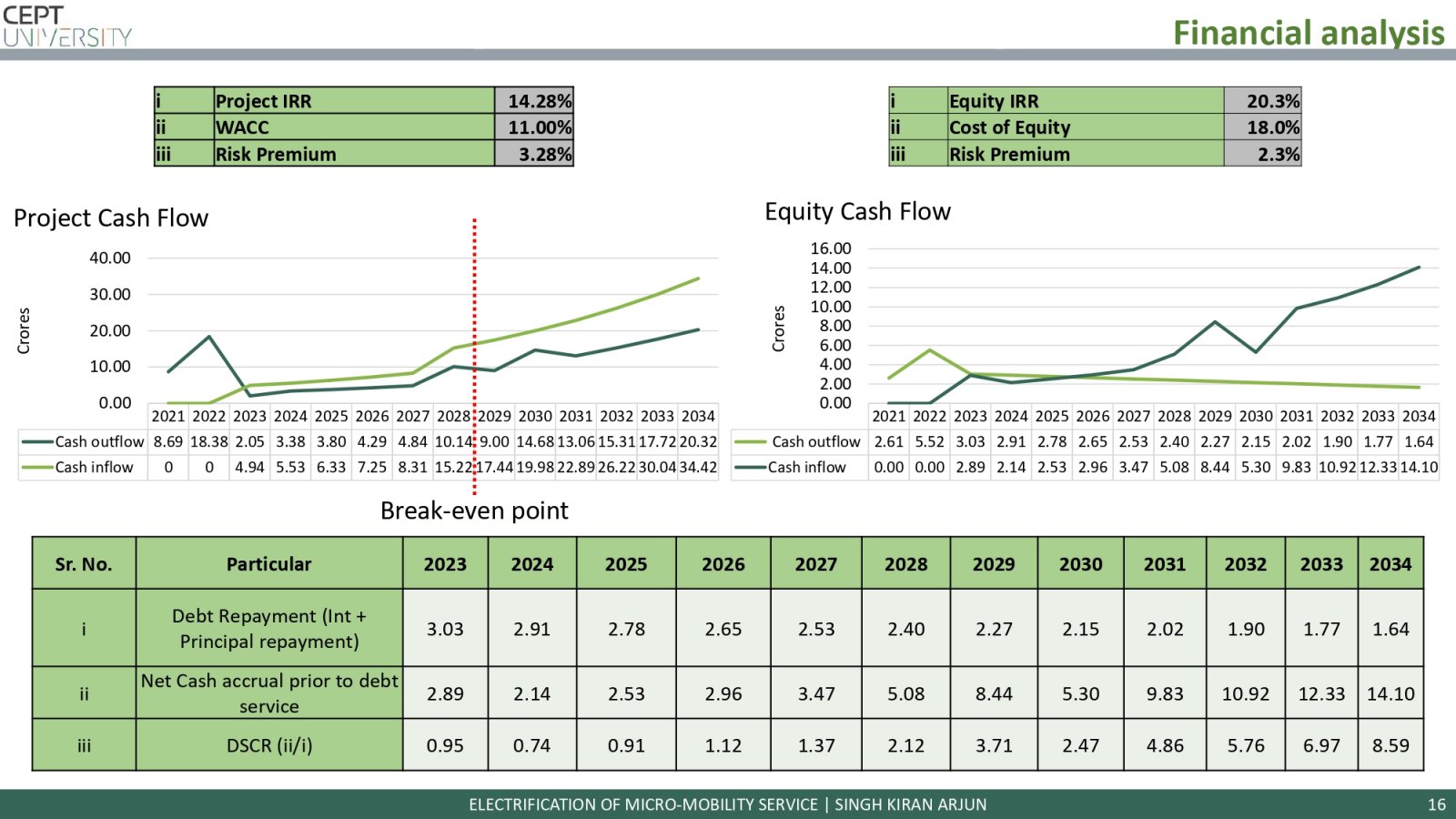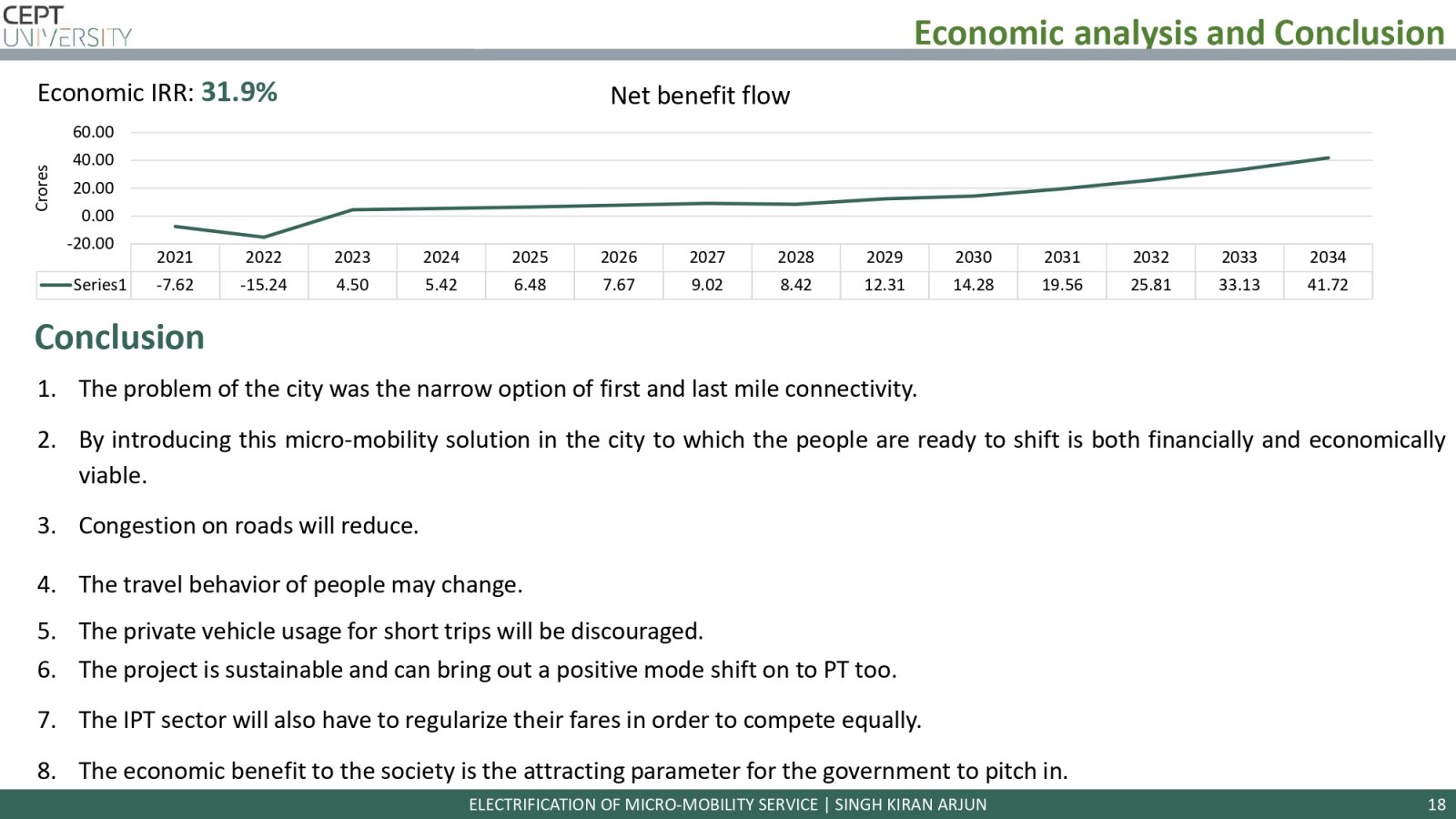Electric Shared Micro-Mobility of Navi Mumbai
- Student SINGH KIRAN ARJUN
- Code PG190463
- Faculty Planning
- Tutor/s Shivanand Swamy,Khelan Modi
- TA Madhura Kawadkar
This portfolio is about the introduction of micro-mobility in the city of Navi Mumbai, as the city is in a close proximity to the metropolitan city – Mumbai. The introduction of this new city with a vision to be self-reliant and serve as a satellite city to Mumbai was done in 1972 to decongest Mumbai. Navi Mumbai was an affordable choice for people and hence grew. The present MRT System is in the form of suburban rail which connects Navi Mumbai to Mumbai. People still travel to Mumbai for work and education purposes. Currently the only mode choice available in the city for the first and last mile connectivity is the IPT or private vehicles. This narrow mode choice availability is leading to congestion on roads and hence the possible solution was coined as the electric shared two-wheeler rentals in the city. These vehicles will be high speed as Yulu is already working in association with NMMC for the PBS and e-bikes. This new vehicle type will attract a different set of people who are willing to shift to rentals if they are high speed, due to the journey time. In a city, all players should be working together so as to formulate a balanced option for all age group of people and their requirements. The proposed model was analysed if it has any demand by conducting on site survey, the shift from existing first mile-last mile connectivity i.e. IPT and Two-wheeler is analysed using discrete choice modelling. The achieved shift was applied on the total number of IPT and Two-wheeler trips. The proposed model is both financial and economically sustainable. The source of fund will be a combination of internal and external sources which are equity and debt and revenues. The benefit this model will provide is that the city will have a new player, it will introduce an oligopolistic market and the IPT sector will have to regularise the fares accordingly. The shared mobility pattern will result in shift to Public Transport and reduce congestion on roads. The usage of private vehicle for short trips will be discouraged and a new travel behaviour of people can set up. It will result in environmental benefits to both the users and the non-users. As the environment is benefitted by reduced carbon footprint, the government may be interested in future expansion of the project and pitch in their contribution to make it successful at a larger scale.
